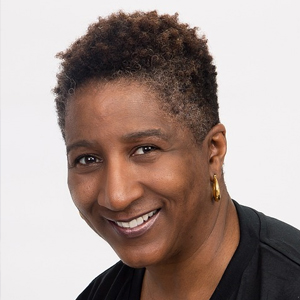Back Pain Helped by Chiropractic After Failed Low Back Surgery
A case study published on January 17, 2019, in the Annals of Vertebral Subluxation Research documented the improvement with chiropractic of a patient with scoliosis and lower back pain who previously had failed lower back surgery.
The study begins by explaining that "Scoliosis is a structural three-dimensional deformity of the spine defined by a lateral curvature of more than 10 degrees." In people above the age of 50, the prevalence of scoliosis is somewhere between 6 and 32% of that population. In adults with scoliosis, it is not uncommon to see back pain, muscle fatigue, degenerative changes, and spinal stenosis.
 The
study points out that spinal problems in the aging population is
of increasing concern and has become more of a financial burden.
"Chronic low back pain due to degenerative spine disease is an
increasing concern in the aging US population and imposes a
large economic burden on society. In the last decade, the
Medicare costs of treating adult spinal deformity (ASD),
including scoliosis, have increased more than 16-fold, from $56
million to more than $958 million."
The
study points out that spinal problems in the aging population is
of increasing concern and has become more of a financial burden.
"Chronic low back pain due to degenerative spine disease is an
increasing concern in the aging US population and imposes a
large economic burden on society. In the last decade, the
Medicare costs of treating adult spinal deformity (ASD),
including scoliosis, have increased more than 16-fold, from $56
million to more than $958 million."
In this case, a 62-year-old woman presented herself to the chiropractor after being referred by her massage therapist. The woman was suffering with chronic lower back pain for the past 20 years. At the time of her chiropractic consultation, she was severe to the point of being antalgic and leaning to the right.
The womanís history included two prior spinal surgeries. The first spinal surgery was 20 years prior where her L5 disc was removed. Her second surgery was 13 years prior for an L5-S1 fusion in which titanium screws were put in through the entire L5-S1 joint space. Both surgeries were unsuccessful as the woman continued to suffer from her issues.
The woman described her pain as being across her lower back and going down into her left leg and foot. She rated the pain as a 7 out of 10, with 10 being the worst. She reported that her pain increased upon standing, sitting, walking or lying down longer than 20 minutes. Her health history also included current and past symptoms of fatigue, migraine headaches, poor posture, arthritis, sciatica, sleep problems, swelling of the ankles, and loss of short-term memory. She was currently taking 13 different medications for her various issues.
A chiropractic examination was performed which included a postural analysis, static and motion spinal palpation, thermographic paraspinal heat studies, and spinal x-rays. In addition to the many individual conditions that the woman had been diagnosed with and medically treated for, the chiropractor determined that subluxations were present and could be addressed with specific forms of chiropractic care.
During her chiropractic care, several follow-up examinations were performed to objectively evaluate her progress. In each of these examinations, the tests showed that she was improving when compared to the initial testing. The woman reported improvement in her ability to sleep and a reduction in low back pain. She also reported improvement in her overall quality of life. A follow-up on her condition three years later showed that she continued to show an improvement in her quality of life and she was able to modify and discontinue her medications.
In the study discussion, the authors summed up the benefits of chiropractic by explaining, "Chiropractic is a health care profession that focuses on the musculoskeletal and nervous system, and the disorders that affects these systems whether they are internal or external. Chiropractors optimizes the nervous system function by removing interference to the nervous system via adjustments of vertebral subluxations. The removal of these interferences allow the brain and the body to communicate effectively allowing for an increase in health and well-being including increased movement and overall improved quality of life this is essential in all age groups but particularly in those over the age of 60 as they are more susceptible to impaired functions."
 Some
of the more common symptoms of otitis media include ear pain,
fever, headache, irritability, and listlessness. If left
unaddressed, the problem could lead to hearing impairment, a
loss of sleep, and a decrease in the overall quality of life not
only for the child but also the parents.
Some
of the more common symptoms of otitis media include ear pain,
fever, headache, irritability, and listlessness. If left
unaddressed, the problem could lead to hearing impairment, a
loss of sleep, and a decrease in the overall quality of life not
only for the child but also the parents.  In
their description of whiplash, the Mayo Clinic website
states, "Whiplash is a neck injury due to forceful, rapid
back-and-forth movement of the neck, like the cracking of a
whip. Whiplash most often occurs during a rear-end auto
accident, but the injury can also result from a sports
accident, physical abuse or other trauma.
Common signs and symptoms of whiplash include neck pain,
stiffness and headaches." Additional symptoms that can occur
from whiplash include tingling or numbness in the arms,
dizziness, ringing in the ears, blurred vision,
irritability, and depression.
In
their description of whiplash, the Mayo Clinic website
states, "Whiplash is a neck injury due to forceful, rapid
back-and-forth movement of the neck, like the cracking of a
whip. Whiplash most often occurs during a rear-end auto
accident, but the injury can also result from a sports
accident, physical abuse or other trauma.
Common signs and symptoms of whiplash include neck pain,
stiffness and headaches." Additional symptoms that can occur
from whiplash include tingling or numbness in the arms,
dizziness, ringing in the ears, blurred vision,
irritability, and depression.  According
to the study, in 2016, there were 37,814 deaths from
accidental opioid overdose. This number grew alarmingly to
43,036 deaths for the year 2017. In comparison, there were
40,327 deaths due to motor vehicle accidents in 2016. But in
2017, that number decreased slightly to 40,231 deaths.
Currently the odds of a person dying from an opioid overdose
have risen to 1 out of every 96 people in the U.S.
According
to the study, in 2016, there were 37,814 deaths from
accidental opioid overdose. This number grew alarmingly to
43,036 deaths for the year 2017. In comparison, there were
40,327 deaths due to motor vehicle accidents in 2016. But in
2017, that number decreased slightly to 40,231 deaths.
Currently the odds of a person dying from an opioid overdose
have risen to 1 out of every 96 people in the U.S. It
is estimated that approximately 1-2% of children under the
age of ten suffer from encopresis. Boys are much more
commonly affected by this condition with 80-90% of all cases
being in males.
It
is estimated that approximately 1-2% of children under the
age of ten suffer from encopresis. Boys are much more
commonly affected by this condition with 80-90% of all cases
being in males.  Antibiotics
are used to treat bacterial infections and have no effect on
viruses. In fact, they may be harmful to the child. An
article in Medical News Today from 2011 stated the threat by
saying, "Did you know that taking antibiotics when you or
your child has a virus may do more harm than good? According
to the US Centers for Disease Control and Prevention, where
children are concerned, antibiotics are the most common
cause of emergency department visits for adverse drug
events."
Antibiotics
are used to treat bacterial infections and have no effect on
viruses. In fact, they may be harmful to the child. An
article in Medical News Today from 2011 stated the threat by
saying, "Did you know that taking antibiotics when you or
your child has a virus may do more harm than good? According
to the US Centers for Disease Control and Prevention, where
children are concerned, antibiotics are the most common
cause of emergency department visits for adverse drug
events."